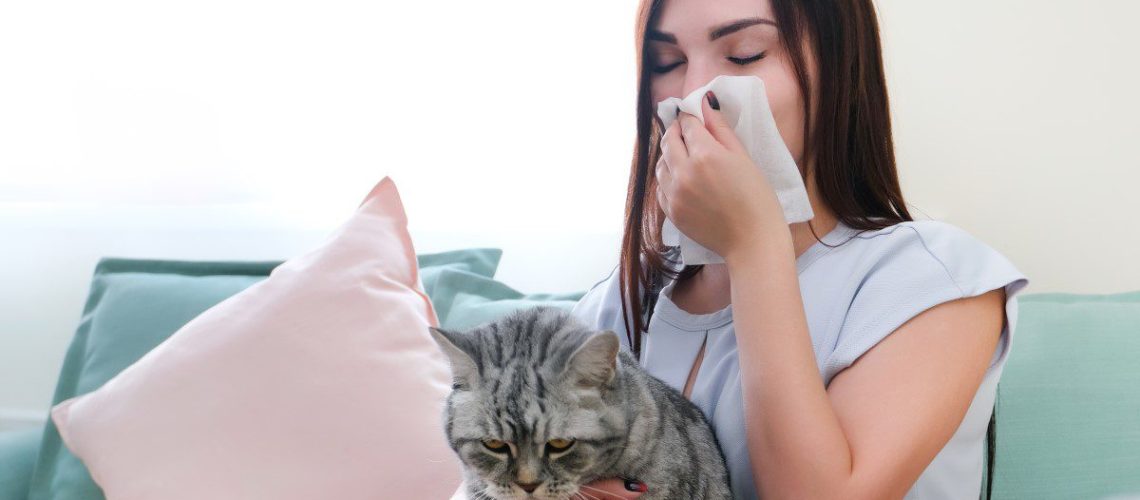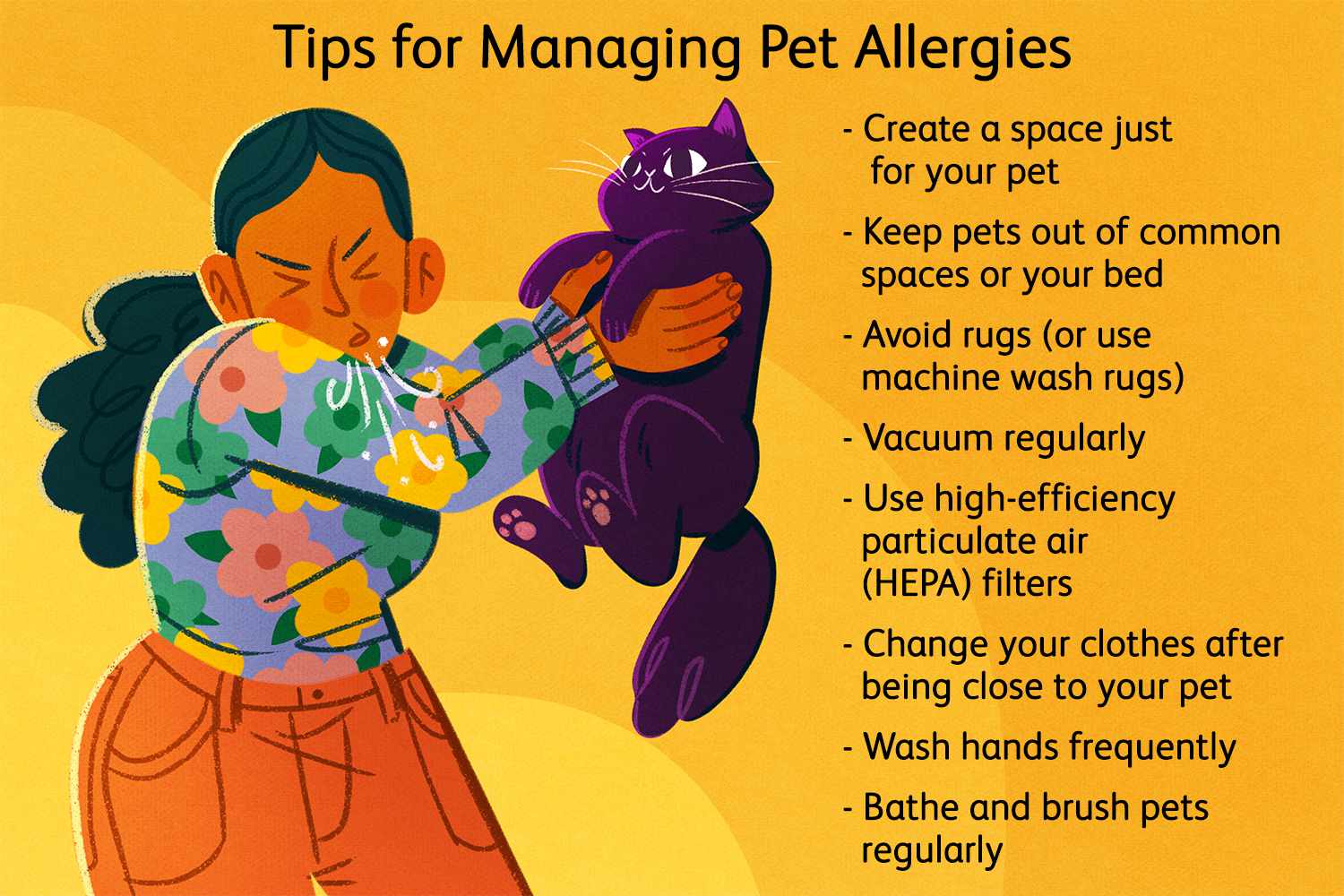Discover the common symptoms of cat allergies and learn how to reduce allergens in your home.
Key Takeaways:
- Consider getting a hypoallergenic cat breed, as they produce fewer allergens.
- Keep your living space clean and free of cat dander by regularly vacuuming and dusting.
- Create an allergen-free zone in your home where the cat is not allowed to enter, such as your bedroom.
- Use air purifiers and HEPA filters to reduce airborne allergens in your home.
- Consult with an allergist for allergy treatments or medications that can help alleviate symptoms when interacting with cats.
Common Symptoms of Cat Allergies
Cat allergies can cause a variety of symptoms in individuals who are sensitive to cats. These symptoms may include:
- Sneezing
- Coughing
- Runny or stuffy nose
- Itchy or watery eyes
- Skin rash or hives
If you experience these symptoms when you are around cats, it is possible that you have a cat allergy. It's important to note that not everyone will have the same reaction to cat allergens, and the severity of symptoms can vary from person to person.
Understanding Why Some People are Allergic to Cats
When a person is allergic to cats, it means their immune system overreacts to certain substances found in cat dander, saliva, and urine. These substances are called allergens. When someone with a cat allergy comes into contact with these allergens, their immune system mistakenly identifies them as harmful invaders and releases chemicals like histamine to fight them off.
The release of histamine leads to the typical allergy symptoms such as sneezing, itching, and congestion. The specific cause of why some people develop allergies while others do not is still not fully understood. However, it is believed that genetics play a role in determining whether someone will be allergic to cats or not.
Reducing Cat Allergens in Your Home
If you have cat allergies but still want to live with a cat, there are steps you can take to reduce the amount of allergens in your home:
- Keep your cat out of your bedroom: This will create an allergen-free space where you can sleep and relax without being exposed to cat dander.
- Regularly clean your home: Vacuuming carpets, dusting surfaces, and washing bedding can help remove allergens from your living environment.
- Use an air purifier: An air purifier with a HEPA filter can help trap and remove allergens from the air.
- Wash your hands after touching your cat: This will help minimize the transfer of allergens from your cat to other parts of your body.
By following these steps, you can create a more allergy-friendly environment in your home even if you have a cat. However, it's important to note that these measures may not completely eliminate all allergens, so it's still possible to experience some symptoms despite taking precautions.
Minimizing Contact with Cat Allergens for Cat Owners
For cat owners who are allergic to cats, there are several steps that can be taken to minimize contact with cat allergens. Firstly, it is important to designate certain areas of the home as "cat-free zones." This can include bedrooms or other areas where the allergic individual spends a significant amount of time. By keeping cats out of these areas, it reduces the likelihood of coming into contact with allergens.
Additionally, regular cleaning is essential in reducing cat allergens in the home. Vacuuming carpets and furniture regularly can help remove allergens from surfaces. Using a vacuum cleaner with a HEPA filter is recommended as it can effectively trap small particles such as cat dander. It is also important to wash bedding and curtains frequently to remove any accumulated allergens.
Creating Cat-Free Zones
- Keep bedroom doors closed to prevent cats from entering.
- Use baby gates or pet barriers to restrict access to certain areas.
- Consider installing air purifiers in designated cat-free zones.
Cleaning Tips
- Vacuum carpets and furniture at least once a week.
- Use a vacuum cleaner with a HEPA filter for better allergen removal.
- Wash bedding and curtains regularly in hot water to eliminate allergens.
Cat Breeds that are Less Likely to Cause Allergies
While no cat breed is completely hypoallergenic, there are certain breeds that produce fewer allergenic proteins than others. These breeds may be more suitable for individuals with milder allergies or those who want to minimize their exposure to allergens. Some cat breeds that are known to be less likely to cause allergies include the Siberian, Balinese, and Russian Blue.
It is important to note that individual reactions to cat allergens can vary, so it is recommended for allergic individuals to spend time with a specific breed before committing to owning one. This can help determine if they have any adverse reactions or if their allergies are manageable around that particular breed.
Siberian
The Siberian cat breed is known for producing lower levels of the Fel d 1 protein, which is a common allergen found in cat saliva and dander. They have a thick, long coat that may help trap allergens and reduce their spread throughout the home.
Tips for Choosing a Cat Breed
- Research different cat breeds and their typical allergenicity levels.
- Visit breeders or shelters to spend time with specific breeds before making a decision.
- Consult with an allergist or healthcare professional for personalized advice.
Allergy-Friendly Alternatives to Traditional Pet Cats
For individuals who love cats but are unable to own one due to allergies, there are several allergy-friendly alternatives available. One option is adopting a hypoallergenic dog breed. While dogs still produce allergens, certain breeds such as poodles and Portuguese Water Dogs have hair instead of fur, which may be less likely to trigger allergies.
Another alternative is considering other types of pets that do not produce as many allergens. Some options include fish, reptiles, or small mammals like guinea pigs or hamsters. These pets can still provide companionship without causing allergic reactions in sensitive individuals.
Hypoallergenic Dog Breeds
Some hypoallergenic dog breeds that may be suitable for individuals with cat allergies include the Bichon Frise, Shih Tzu, and Maltese. These breeds have hair instead of fur and tend to shed less, reducing the amount of allergens in the environment.
Allergy-Friendly Pet Options
- Consider adopting a hypoallergenic dog breed.
- Explore other types of pets such as fish, reptiles, or small mammals.
- Consult with an allergist or healthcare professional for personalized recommendations.
Possibility of Building Tolerance to Cat Allergies Over Time
While some individuals may experience severe allergic reactions to cats initially, there is a possibility of building tolerance to cat allergies over time. Exposure to low levels of cat allergens on a regular basis can potentially desensitize the immune system and reduce allergic reactions. However, this process should be done under medical supervision and guidance.
Allergy shots, also known as immunotherapy, can be an effective treatment option for building tolerance to cat allergens. These shots contain small amounts of the allergen and are administered regularly over a period of time. Gradually increasing doses help train the immune system to become less reactive to cat allergens.
Allergy Shots (Immunotherapy)
Allergy shots involve receiving injections containing small amounts of cat allergens over a period of time. This treatment aims to desensitize the immune system and reduce allergic reactions in the long term.
Talking to an Allergist
- Consult with an allergist or immunologist to discuss the possibility of undergoing allergy shots.
- Follow the recommended treatment plan and schedule for optimal results.
- Be aware of potential risks and side effects associated with immunotherapy.
Medications and Treatments for Managing Cat Allergies
There are various medications and treatments available to help manage cat allergies. Antihistamines, such as cetirizine or loratadine, can be taken to relieve symptoms like sneezing, itching, and watery eyes. Nasal sprays containing corticosteroids may also be prescribed to reduce nasal inflammation and congestion.
In more severe cases, a healthcare professional may recommend allergy shots (immunotherapy) as a long-term solution. These shots can help desensitize the immune system to cat allergens over time. Additionally, over-the-counter saline nasal rinses can provide temporary relief by flushing out allergens from the nasal passages.
Antihistamines
- Cetirizine (Zyrtec)
- Loratadine (Claritin)
- Fexofenadine (Allegra)
Nasal Sprays
- Fluticasone propionate (Flonase)
- Mometasone furoate (Nasonex)
- Budesonide (Rhinocort)
Tips for Creating a Comfortable Space for People with Cat Allergies and Cats
It is possible to create a comfortable living space for both people with cat allergies and cats themselves. One important step is regularly grooming the cat to minimize shedding and dander production. Brushing the cat's fur frequently can help remove loose hair and reduce the amount of allergens in the environment.
Using air purifiers with HEPA filters can also be beneficial in capturing airborne allergens. These filters can help improve indoor air quality by trapping cat dander and other allergenic particles. Additionally, keeping the home clean and free of dust can further reduce exposure to cat allergens.
Grooming Tips
- Brush the cat's fur regularly to remove loose hair and dander.
- Consider using grooming wipes specifically designed to reduce allergens on the cat's coat.
- Bathe the cat occasionally using hypoallergenic shampoos recommended by a veterinarian.
Air Purification
- Invest in air purifiers with HEPA filters to capture airborne allergens.
- Place air purifiers in rooms where allergic individuals spend a significant amount of time.
- Regularly clean or replace air filters according to manufacturer's instructions.
Can I keep a cat if I have cat allergies?
Even if someone has allergies, they can still have a pet by taking measures to control and minimize exposure to allergens and treating their symptoms. This allows most individuals to enjoy the company of pets while managing their allergies.
Is there a way to live with cats if you're allergic?
Decide to keep your bedroom free of cats, even though it may be challenging. Start reducing allergens by washing and replacing your bedding, curtains, and pillows. Additionally, use specific covers that are made to prevent allergens from getting into your mattress and pillows.
Do air purifiers help with cat allergies?
HEPA filter air purifiers are highly efficient in reducing cat-related allergens in your house. Nonetheless, their effectiveness can vary depending on different factors. It is crucial to understand that cat allergens consist of more than just fur or hair; they also include dead skin cells, saliva, and urine.
What percentage of cat owners are allergic to cats?
Research indicates that around 15% of the population has allergies to dogs or cats. Despite this, about two million Americans who are allergic to cats, which is approximately one-third of those affected, still choose to have at least one cat in their home.
What kills pet dander?
All pet products may advertise as the most effective in getting rid of dander, but even common household items such as dishwashing soap or baby shampoo can achieve the same result.
Do cat allergies get worse over time?
After that, it is our chance to absorb them through our skin pores. Allergies to cats accumulate, which means they increase over time. Extended exposure will eventually result in an allergic response.

















